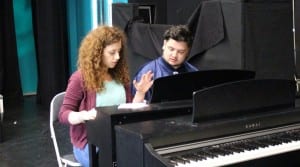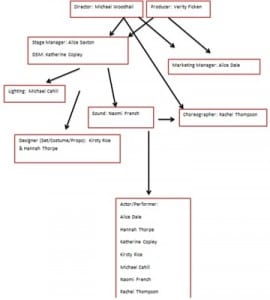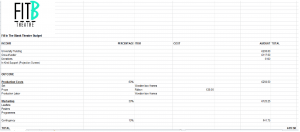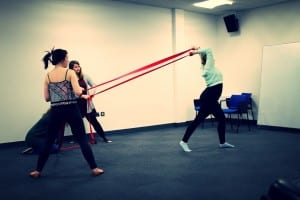As producer of Fill In The Blank Theatre one key task I do, is taking minutes during every meeting or rehearsal. This simple yet very important task enables us as a company to keep track of any ideas or suggestions regarding the company, the performance, the set, sound or lighting. With any theatre company, (especially that which consists of a large number in our case ten members) remembering every idea or contribution to the devising process is difficult and therefore often a potentially exciting idea can be missed or forgotten.
Freadman and Reade note that “in the case of all companies, efficient and effective marketing and organisation, as well as your originality and talent, are the keys to longevity” (Fredman and Reade, 1996, p.267). The point they raise re-enforces the importance of keeping minutes and rehearsal notes. It is vital to find the balance between creativity and organisation. By keeping minutes it means I can find this balance by noting everyone’s creative contributions which thus allows us as a company to remain organised.
Seabright notes that “one key purpose of these [production] meetings is to keep the director updated on how the production side of things is going, which can otherwise take a back seat in their priorities when rehearsals are in full swing” (Seabright, 2010, p.272). This is also where the task of taking minutes comes into play. As Seabright notes often the production side of the process can take a ‘back seat’ during the devising process as most of the Directors focus is on the rehearsals and creating the content itself. By myself and often the stage manager taking notes and minutes in rehearsals it enables us to be able to give the in-house technical team at the venue a better idea of our performance from the offset.
Arranging production meetings with the in-house technical team is important as it means we can establish early on our vision and if it is achievable. By taking notes it means I can then feedback to the Director as Seabright notes informing them on how things are going and what the technical team suggest if problems arise.
It is clear that taking minutes and notes throughout the devising process is important for keeping the company on track and as Seabright notes fulfilling “one really important part of a producer’s role is maintaining a view of the ‘big picture’ at all times in the production process” (Seabright, 2010, p.12).
Works Cited:
Freadman, R. and Reade, I. (1996) Essential Guide to Making Theatre. London: Hodder and Stoughton.
Seabright, J. (2010) So You Want to be a Theatre Producer? London: Nick Hern Books.







